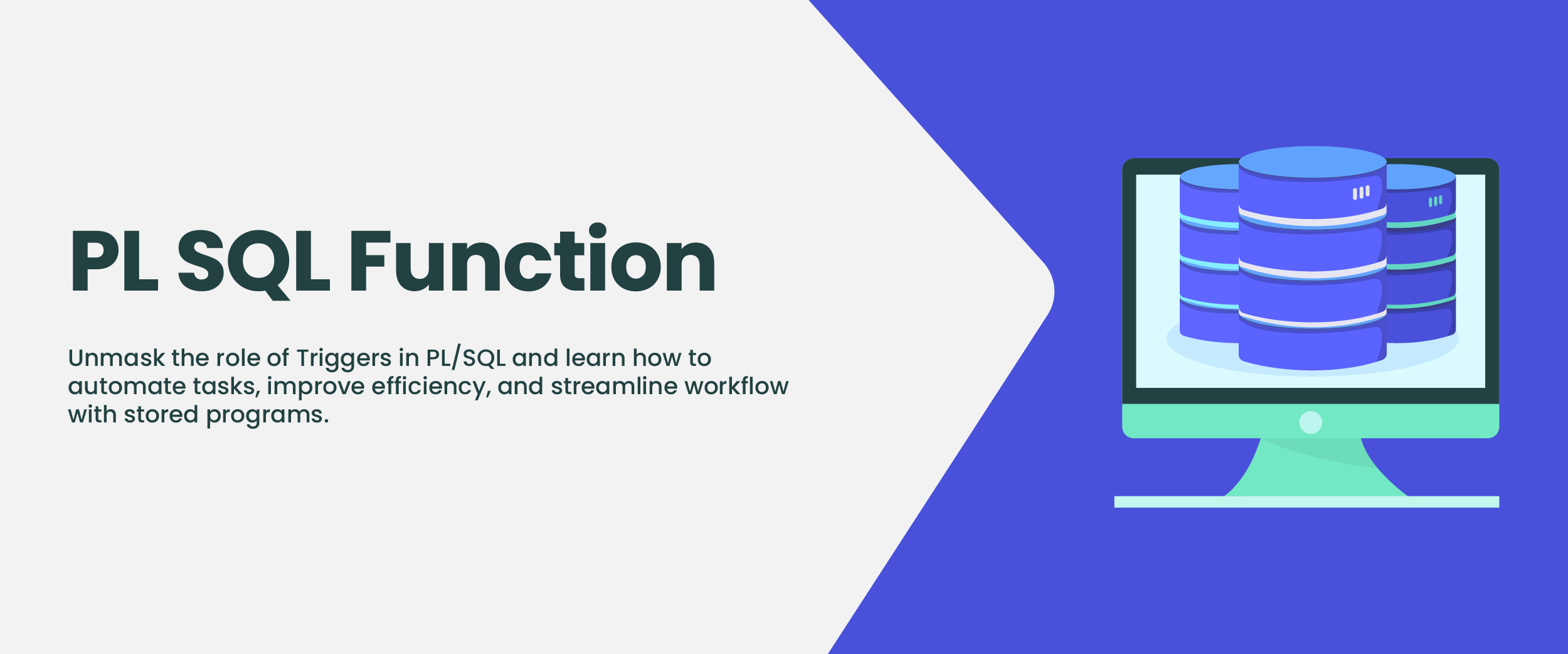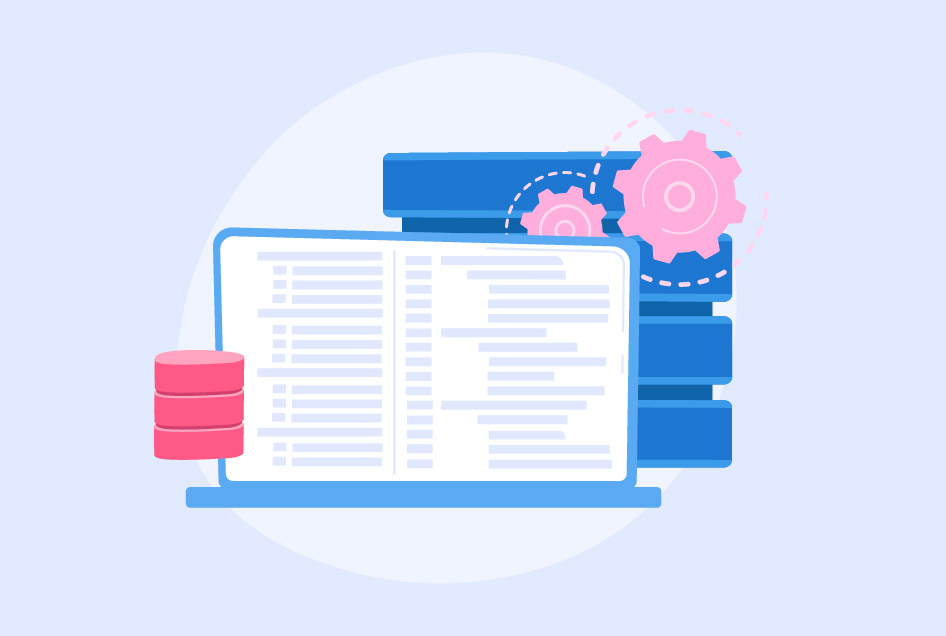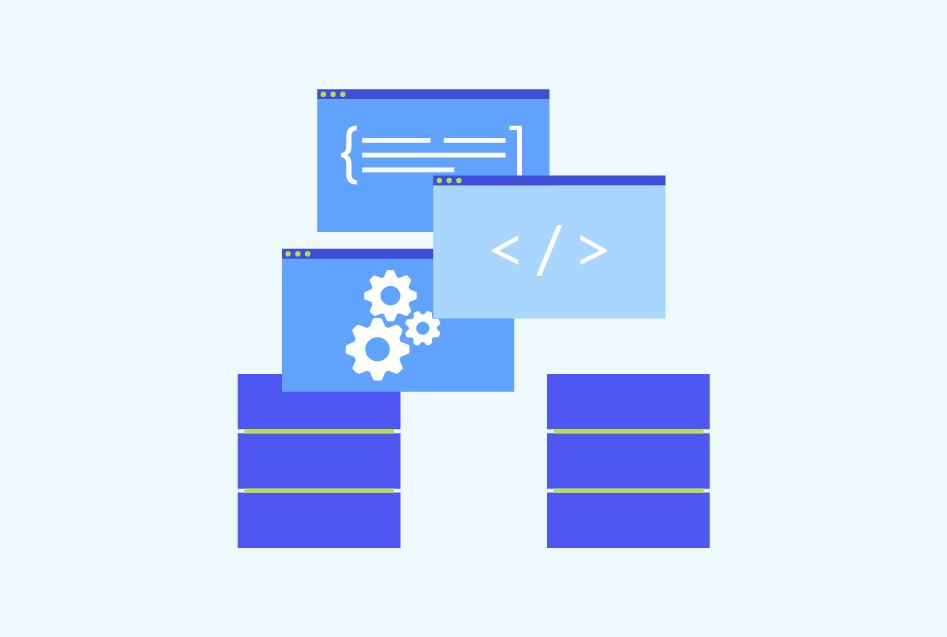PL/SQL Function – Syntax, Structure, Advantages, & More
In the realm of database management systems, PL/SQL (Procedural Language/Structured Query Language) stands as a powerful tool. It enables developers to leverage procedural programming constructs within the Oracle database environment. One of the fundamental elements of PL/SQL is the function, which offers a structured and reusable approach to encapsulate logic and perform specific tasks. In this extensive blog post, we will delve into the intricacies of PL/SQL functions, examining their purpose, structure, advantages, and real-world examples.
What is a Function in PL/SQL?
PL/SQL function is a named, self-contained block of code that performs a specific task and returns a value. It operates similarly to a procedure but differs in the sense that it always produces a result. To build your career in this field consider taking a SQL course and grab your dream job offers.
Functions are designed to encapsulate logical operations, promoting code modularity and reusability. Developers can build a more maintainable and efficient PL/SQL codebase by isolating specific tasks within functions.
Understanding PL/SQL Function
To better comprehend the inner workings of a PL/SQL function, let’s dissect its structure. A typical PL/SQL function consists of the following components:
Function Declaration
The function declaration serves as the initial step in defining a PL/SQL function. It includes the function’s name, input parameters (if any), and the return type. Parameters can be either input-only or input-output, allowing for dynamic and flexible function behavior.
Local Declarations
Within the function’s block, local declarations allocate memory for variables that are used to store intermediate values or perform calculations. These variables are confined to the scope of the function, preventing them from interfering with other parts of the codebase.
Function Body
The function body contains the actual logic of the function. It consists of a series of statements that manipulate the input parameters and local variables to achieve the desired outcome. This is where the magic happens, as developers can employ conditional statements, loops, and other programming constructs to implement complex operations.
Return Statement
The return statement marks the end of the function and specifies the value that will be returned to the caller. It is essential to ensure that the return type matches the one declared in the function header.


Syntax of PL/SQL function
To gain a deeper understanding of PL/SQL functions, let’s examine their syntax and structure. A typical PL/SQL function consists of the following components:
FUNCTION function_name (parameter1 [IN | OUT | IN OUT] datatype, parameter2 [IN | OUT | IN OUT] datatype, ...)
RETURN return_datatype
IS
-- Declaration section (optional)
variable1 datatype;
variable2 datatype;
...
BEGIN
-- Function body
-- SQL and PL/SQL statements
RETURN return_value;
EXCEPTION
-- Exception handling (optional)
WHEN exception_name1 THEN
-- Handle exception 1
WHEN exception_name2 THEN
-- Handle exception 2
...
END;
Structure of PL/SQL function
The function_name is something that is a unique identifier for the function. It should follow
- The naming conventions and best practices of your organization. Parameters enclosed within parentheses define the inputs accepted by the function. Each parameter consists of a name, direction (IN, OUT, or IN OUT), and data type.
- The RETURN statement specifies the data type of the value returned by the function.
- The IS keyword signals the start of the function’s declaration and body section.
- The declaration section, denoted by the keyword DECLARE, is optional and is used to define local variables and cursors.
- The function body comprises the actual logic and processing, where statements in SQL and PL/SQL are executed to produce the desired result.
- Finally, the RETURN statement concludes the function, specifying the value that will be returned.
- Exception handling is also optional and allows developers to handle specific exceptions that may occur during the execution of the function.
Advantages of PL/SQL Functions
PL/SQL functions provide a multitude of benefits for developers working within Oracle database environments. Let’s explore some of the key advantages that make functions an indispensable tool:
Code Reusability
Functions are designed to encapsulate logic into modular units that can be reused throughout the codebase. This promotes the principles of Don’t Repeat Yourself (DRY) and reduces redundancy. By reusing functions, developers can improve code maintainability and reduce the likelihood of introducing bugs.
Performance Optimization
PL/SQL functions can enhance performance by minimizing network traffic. This can lead to significant performance improvements, especially when dealing with large volumes of data.
Encapsulation and Abstraction
Functions allow developers to encapsulate complex logic, making it easier to understand and maintain. This facilitates collaboration among developers and simplifies debugging and troubleshooting.
Improved Security and Data Integrity
PL/SQL functions can help enforce business rules and data integrity constraints. This prevents data corruption and enhances overall security.
Real-World Applications of PL/SQL Functions
Here are some of the applications:
Analyzing Statistical Data Using Functions
When it comes to the realm of statistical data analysis, PL/SQL functions emerge as a formidable force. These functions serve as the backbone of analytical prowess by encapsulating complex statistical calculations within their elegant confines. The beauty of this approach lies in its ability to simplify the analytical process while bolstering code readability.
Enhancing Data Integrity with Validation Functions
In the realm of data management, ensuring data integrity is an ever-present challenge. Fortunately, PL/SQL functions rise to the occasion as stalwart guardians of data sanctity. These validation functions play a pivotal role in safeguarding the integrity of your precious data by implementing meticulous validation checks.
Simplifying Complex Business Logic with Functions
In the vast landscape of business logic, complexity often reigns supreme. Burdened with intricate rules and convoluted calculations, the task of deciphering and managing such complexity can be daunting. Enter PL/SQL functions, the saviors of perplexity and architects of simplicity.
With their mighty arsenal of capabilities, PL/SQL functions offer a sanctuary for your complex business logic. In essence, PL/SQL functions transcend the ordinary, catapulting your data analysis, data integrity, and business logic to unprecedented heights.
Efficiency and Maintainance in PL/SQL Functions
Efficiency and maintainability are the twin pillars upon which successful PL/SQL development stands. To guide you on this journey toward code excellence, here are some key tips to keep in mind:
Tip 1: Keep Functions Focused and Cohesive
- To maintain code sanity and facilitate future maintenance:
- Keep your PL/SQL functions focused on a single task or responsibility.
- Adhere to this principle for precise and efficient function execution.
- Avoid merging tasks into a single function:
- For example, when validating and formatting a phone number.
- Instead, create separate functions for validation and formatting.
- Benefits of this approach:
- Promotes code reuse.
- Simplifies future modifications.
Tip 2: Optimize Function Performance with Proper Indexing
Efficient querying lies at the heart of optimal PL/SQL function performance. To unlock the full potential of your functions, make sure that
- The tables involved have appropriate indexes. Indexes empower the database engine to swiftly locate the desired data, resulting in expedited query execution.
- Remember, a well-placed index can be the difference between a snappy function and a sluggish one.
- Take the time to analyze your data access patterns and strategically deploy indexes to harness the power of efficient querying.
Tip 3: Handle Exceptions Gracefully for Robust Error Handling
In the tumultuous world of software development, exceptions are an inevitable part of the journey. Therefore, it is paramount to anticipate potential exceptions and handle them gracefully within your PL/SQL functions.
- By implementing robust error-handling mechanisms, you ensure that your functions can gracefully recover from exceptional situations.
- Additionally, informative error messages provide valuable insights into the calling code, aiding in troubleshooting and debugging efforts.
Tip 4: Leverage Built-In PL/SQL Features and Functions
PL/SQL offers a treasure trove of built-in features and functions, waiting to be harnessed for your coding endeavors. Familiarize yourself with these powerful tools and employ them judiciously to optimize your functions.
- Instead of reinventing the wheel, consider utilizing implicit or explicit cursors to handle query results efficiently.
- Embrace the convenience of built-in string manipulation functions, date functions, and mathematical functions to streamline your code and enhance its readability.
Tip 5: Document Your Code for Future Reference
Documentation serves as a lighthouse guiding future developers through the vast ocean of code.
- Take the time to document your PL/SQL functions comprehensively, ensuring that their purpose, inputs, outputs, assumptions, and limitations are clearly outlined.
- Consider adopting a standardized documentation format, such as Javadoc-style comments, to maintain consistency across your codebase.
- Remember, good documentation not only benefits others but also serves as a valuable reference for your future self.
- In the realm of PL/SQL functions, efficiency and maintainability are not mere buzzwords. They are the foundations upon which exceptional code is built.
Application of PL/SQL Functions
These functions possess a versatile nature that allows them to excel in various domains. Let’s explore a few examples where these functions shine:
Data Transformation
When it comes to data manipulation, PL/SQL functions are a force to be reckoned with. They can effortlessly tackle tasks like unit conversions, date formatting, and enforcing custom business rules. By harnessing the power of these functions, developers can efficiently transform and manipulate data at the database level.
Custom Aggregations
While Oracle’s built-in aggregate functions like SUM and AVG are valuable tools, they may not always meet specific requirements. This is where PL/SQL functions come to the rescue. Developers can craft custom aggregations tailored to the unique needs of their business, enabling them to extract meaningful insights from their data with precision.
Complex Data Retrieval
Navigating the complexities of data retrieval can be a daunting task. PL/SQL functions rise to the occasion by encapsulating complex data retrieval logic. By abstracting complex join operations, filtering conditions, and sorting criteria within functions, developers can enhance code readability and maintainability. This approach simplifies the querying process, making it more intuitive and efficient.
Security Enhancements
Data security is one of the major concerns in today’s digital landscape. PL/SQL functions offer a robust solution by enabling developers to implement security measures within the database. By encapsulating sensitive data access and manipulation operations within parts, fine-grained access control can be enforced, preventing unauthorized actions and fortifying the security posture of the system.
Conclusion
In the world of PL/SQL development, functions stand as a powerful tool for encapsulating logic, promoting code reusability, and enhancing overall performance. By understanding the anatomy of a PL/SQL function and exploring real-world examples, developers can unlock the full potential of this fundamental construct.
So, the next time you find yourself grappling with complex calculations, data transformations, or the need for modular code, remember these functions—your ally in the realm of Oracle database development.







